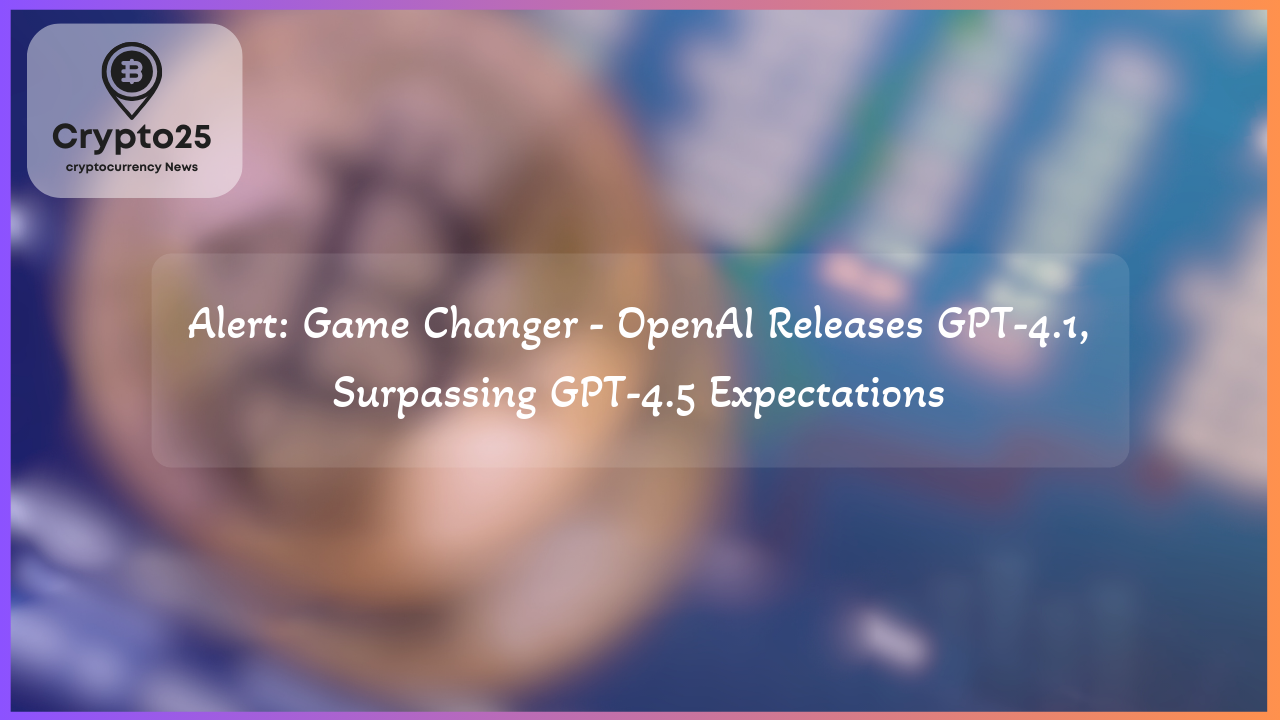
OpenAI has once again made waves in the artificial intelligence arena with the unveiling of GPT-4.1, a groundbreaking advancement geared toward developers. Featuring expanded context windows of up to one million tokens and significant performance improvements, GPT-4.1 promises to redefine efficiency in large-scale data processing. This cutting-edge innovation introduces three variants—Standard, Mini, and Nano—all focused on delivering tailored performance options at reduced costs.
### GPT-4.1: A Leap Ahead in AI Performance
The release of GPT-4.1 represents a pivotal moment in the journey of large language models (LLMs). Boasting a one-million-token context window, the model allows for seamless comprehension of extensive datasets, such as entire codebases or even novels. According to OpenAI, this long-context capability comes at no additional cost, offering an unparalleled feature for developers aiming to process significant volumes of data efficiently.
Performance benchmarks demonstrate GPT-4.1’s prowess, with the model achieving a 55% accuracy rate on the SWEBench coding benchmark—a considerable leap from GPT-4o’s 33% accuracy. Furthermore, the Nano variant, which OpenAI markets as their most cost-effective and fastest yet, processes data at a rate of just $0.12 per million tokens, setting a new standard for affordability in the AI development space. The introduction of Mini and Nano variants means developers now have access to tools tailored to their specific computational and financial needs.
| Title | Details |
|---|---|
| Market Cap | $1.2 Trillion |
### Boosting Developer Experiences with GPT-4.1’s Capabilities
One of GPT-4.1’s most remarkable feats lies in its enhanced ability to follow instructions and execute detailed tasks. Michelle, OpenAI’s post-training research lead, emphasized during the launch event how adept the model is at adhering to intricate guidelines without deviating into creative misinterpretations—a common issue in earlier AI iterations.
During a live demonstration, GPT-4.1 successfully analyzed a NASA log file containing 450,000 tokens, generating a functional web application with near-perfect accuracy. This test highlights its ability to handle previously unmanageable workloads with speed and scale. For developers, these advanced features mean launching projects faster and with greater confidence in the accuracy of GPT-4.1’s outputs.
OpenAI’s decision to phase out the recently introduced GPT-4.5 signals their confidence in GPT-4.1’s capabilities. Developers have been given a three-month transition period to integrate the new model into their systems, reinforcing its status as the flagship model in terms of both technical capacity and practicality.
### OpenAI’s Controversial Model Naming Journey
Despite GPT-4.1’s technical advancements, OpenAI’s naming conventions have sparked widespread confusion. Following GPT-4’s initial release, OpenAI sequentially introduced GPT-4o and GPT-4.5, only to later pivot toward naming their newer models with numerical iterations and additional monikers. This trend has created moments of misalignment, such as the absence of an “o2” model and the contradictory naming logic behind “o3 mini-high.”
The inconsistency reached another peak with the development of GPT-4o and OpenAI o, two distinct tools with overlapping names that have bewildered even seasoned AI enthusiasts. While humorous explanations have been provided by OpenAI executives—such as avoiding brand confusion with Telefónica’s O2 network—the broader AI community remains eager for a more cohesive framework for naming these transformative tools.
Regardless of such controversies, GPT-4.1 remains a beacon of technological progress in artificial intelligence, earning its place as the successor to GPT-4.5. OpenAI’s product lead Kevin Weil even referred to it as the beginning of a “new era for APIs,” signaling OpenAI’s commitment to delivering meaningful, developer-focused solutions.
### The Future of GPT Models
OpenAI’s ambitious roadmap for their AI solutions keeps the global community on edge. Recent announcements hint at the upcoming release of “o4,” which will likely shift paradigms yet again in computational reasoning. However, the distinction between o4 and earlier models, such as the creatively named 4o, illustrates that progress in AI technology continues to outpace the coherence in branding.
For developers and enterprises, GPT-4.1 presents an opportunity to integrate a technological marvel that blends speed, precision, and affordability. As the field of artificial intelligence continues to advance at breakneck speed, OpenAI remains at the forefront—delivering tools that empower developers to build, innovate, and dream on a global scale.
If OpenAI’s current trajectory is any indication, the future may hold even more disruptive technologies, with model names as unique as the solutions they offer. For now, GPT-4.1 sets a new benchmark for excellence in artificial intelligence, leaving the crypto community and tech enthusiasts eager to see what comes next.
